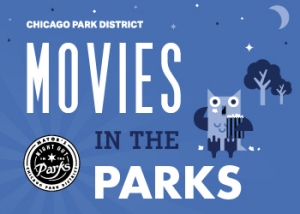Latest
-

-

-
 New Illinois laws in Effect on July 1, 2025 July 3, 2025
New Illinois laws in Effect on July 1, 2025 July 3, 2025 -
 ComEd, HIRE360 Celebrate New Graduates July 3, 2025
ComEd, HIRE360 Celebrate New Graduates July 3, 2025 -
 ComEd Kicks Off Elk Grove Substation Expansion July 3, 2025
ComEd Kicks Off Elk Grove Substation Expansion July 3, 2025
Popular
Tags
Artistas Adolescentes Aprenden el Valor de un Arduo Trabajo
Artists Nationwide
Brazilian Students Tour Kirie Water Reclamation Plant
Challenges of Returning to School in Adulthood
Chicago
Chicago Air and Water Show
Chicago CPS
Chicago Dream Act
Comparta su Historia
CPS
Cultura Latina
Delicious Salad Meals
Dream Act
Dream Act chicago
Dream Relief
Dream Relief Chicago
El Alma de la Fiesta
Ending Summer on the Right Foot
Ensaladas sencillas y deliciosas como plato principal
Estudiantes Brasileños Recorren la Planta de Reclamación de Agua Kirie
Feria de Regreso a la Escuela de la Rep. Berrios
Festival Unísono en Pilsen
Grant Park Spirit of Music Garden
ICIRR
ICIRR Receives Criticism Over Dream Relief Day
ICIRR Recibe Críticas
Jose Cuervo Tradicional
José Cuervo
José Cuervo Tradicional Celebra la Cultura Latina e Inspira Artistas a Nivel Nacional
Latin Culture
Los Retos de Volver a la Escuela Cuando Adultos
Meijer Abre sus Puertas en el Distrito de Berwyn
Meijer Opens in Berwyn District
orth side Summer Fest on Lincoln Ave
PepsiCo Foundation Apoya Futuros Periodistas Hispanos
PepsiCo Foundation Supports Future Hispanic Journalists
Share Your Story
Show Acuático y Aéreo
Simple
StoryCorps
storycorps.org
Teen Artists Learn the Value of Hard Work
Terminando el Verano con el Pie Derecho
Unisono Festival in Pilsen
‘El Chente’








Who Or What Killed the Passenger Pigeon?
by Daniel Nardini
The passenger pigeon that once roamed all of North America in the millions as we all know is now extinct. The last passenger pigeon died in a Cincinnati zoo in 1914. The extinction of the passenger pigeon has long been blamed on over-hunting of the species in the middle and late 19th Century. But this theory is now being tested. Professor Robert Zink of the University of Minnesota believes that nature itself may have helped contribute to the destruction of the passenger pigeon.
In recovering some DNA samples from the remains of the last known species of passenger pigeons, Zink discovered that before the massive over-hunting that helped drive the species to extinction, there had been a natural decline in the numbers of the passenger pigeon. From what records had survived, Zink and other researchers have hypothesized that the numbers of the passenger pigeon were kept in check by the Native Americans who hunted them for food. However, since the Native Americans hunted the passenger pigeon on a small scale, the species was never over-hunted and their numbers could recover. But once the Native Americans were pushed out of many of the habitats where the passenger pigeon reigned, the passenger pigeon’s numbers swelled well beyond what they were.
Their numbers grew so fast and enormous that they virtually blocked out the sun. They ate so much of the nuts and fruits that there were almost no food sources left for the next generation or the generation after that of passenger pigeons. Because of this, their numbers began to decline. According to Zink, they might have recovered had it not been for the European American settlers coming in and shooting as many passenger pigeons as possible. The result was that this species could not recover, and so became extinct. So in conclusion, the passenger pigeon was already under stress from mother nature when humans stepped in and basically helped tipped the species to extinction.
But is this the true story of the end of the passenger pigeon? Since we only have some DNA samples, some historical records, and a new theory to fit the known facts, we may never be sure. Although the extinction of the passenger pigeon occurred in relatively recent times, record information was still pretty primitive, we had no idea what other factors might have led to their decline, and by the time the last one was living in a zoo it was too late to try and figure out why the species went extinct. The only possible good it might do for the future is for us to realize that it may help us how to avoid possible extinction of other species on this planet.